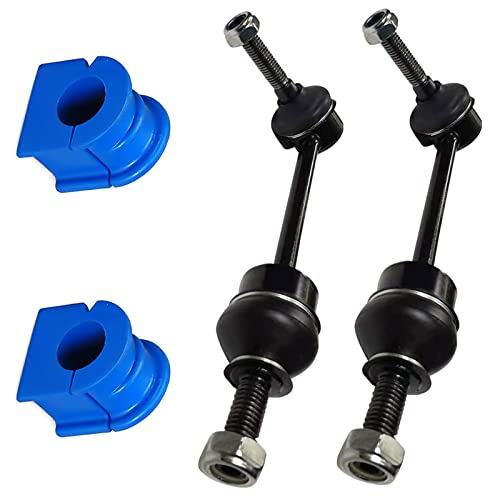How to Improve Customer Service in Automotive Industry: 5 Key Strategies
To improve customer service in the automotive industry, focus on knowing your customers, delivering quality products and services, providing excellent customer service, seeking feedback and improvement, rewarding loyalty and referrals, and building long-term relationships. Additionally, consider establishing a customer loyalty program to increase customer retention.
By implementing these strategies, you can ensure customer satisfaction and enhance the overall customer experience in the automotive industry.
Embracing Technology For Enhanced Customer Interactions
When it comes to improving customer service in the automotive industry, embracing technology is crucial. One way to achieve this is by leveraging CRM systems. These systems allow businesses to effectively manage customer interactions, track customer data, and provide personalized experiences. By integrating CRM systems into their operations, automotive companies can streamline their processes and ensure efficient communication with customers.
In addition to CRM systems, incorporating mobile apps can also enhance customer interactions. Mobile apps provide convenience for customers, allowing them to access information, schedule appointments, and receive updates on their mobile devices. This improves the overall customer experience and increases customer satisfaction.
By embracing technology through CRM systems and mobile apps, the automotive industry can significantly improve customer service and create long-lasting relationships with their customers.
Personalizing The Customer Experience
Improving customer service in the automotive industry requires personalizing the customer experience. This involves creating customer profiles to understand their preferences and behaviors. By doing so, you can offer customized service recommendations tailored to their specific needs, enhancing their overall satisfaction and loyalty.
Quality Assurance In Service And Repairs
Implementing stringent QA processes ensures that all service and repairs meet the highest standards. Regular staff training is essential to keep everyone up to date with the latest techniques and technologies. This guarantees that the customer service experience is consistently excellent.
Feedback Mechanisms And Continuous Improvement
To improve customer service in the automotive industry, implementing feedback mechanisms is essential for continuous improvement. By actively seeking and responding to customer feedback, automotive businesses can identify areas for enhancement and ensure customer satisfaction. This proactive approach fosters a culture of continuous improvement, driving the overall quality of customer service in the industry.
| Introducing Real-Time Feedback Tools |
| The automotive industry can improve customer service by introducing real-time feedback tools. These tools can be in the form of customer surveys, online reviews, or social media feedback. By collecting feedback from customers in real-time, automotive businesses can quickly identify areas for improvement and make necessary changes to their services. |
| Adapting Services Based on Customer Input |
| Once feedback has been collected, automotive businesses must take steps to adapt their services based on customer input. This can include making changes to their products or services, improving their communication with customers, or providing additional training to their employees. By making these adaptations, businesses can improve customer satisfaction and loyalty, ultimately leading to increased revenue and profitability. |
Fostering Customer Loyalty Programs
| Designing reward systems: | One of the best ways to foster customer loyalty in the automotive industry is by designing reward systems. By offering special incentives and rewards to repeat customers, you can encourage them to continue doing business with your dealership. This could include special offers for repeat customers, such as discounts on service or maintenance, or even exclusive access to new models or features. By providing these rewards, you show your customers that you value their business and are willing to go the extra mile to keep them satisfied. |
In addition to designing reward systems, there are several other steps you can take to improve customer service in the automotive industry:
- Know your customers: Take the time to understand your customers’ needs and preferences, and tailor your services to meet those needs.
- Deliver quality products and services: Make sure your products and services are of the highest quality, and provide a positive customer experience from start to finish.
- Provide excellent customer service: Train your staff to provide exceptional customer service, and make sure they are empowered to resolve any issues that arise.
- Seek feedback and improvement: Regularly solicit feedback from your customers, and use that feedback to improve your products, services, and customer experience.
- Build long-term relationships: Focus on building long-term relationships with your customers, rather than just making a one-time sale.
By following these guidelines and designing effective reward systems, you can improve customer service in the automotive industry and foster long-term customer loyalty.
Efficient And Transparent Communication
Efficient and transparent communication is crucial for improving customer service in the automotive industry. Establishing clear communication channels can help build trust and ensure that customers have a positive experience with your business. This includes providing accurate and timely information about pricing and services, as well as being upfront about any potential issues or delays.
Transparency in pricing and services is also important. Customers want to know exactly what they are paying for and what services they are receiving. By providing detailed information about pricing and services, you can help build trust and establish a positive reputation for your business.
Creating An Omnichannel Service Experience
In order to improve customer service in the automotive industry, creating an omnichannel service experience is crucial. This means integrating both online and offline touchpoints to provide consistent service across channels. By doing so, customers can seamlessly interact with your brand through various channels, such as social media, email, phone, and in-person visits.
To achieve this, it is important to know your customers and their preferences. Delivering quality products and services is also key to ensuring customer satisfaction. In addition, seeking feedback and making improvements based on that feedback can help build long-term relationships and reward loyalty and referrals.
Finally, offering customer loyalty programs can increase customer retention and attract new customers to your dealership. By following these steps, you can improve customer service and satisfaction in the automotive industry.
Investing In Employee Training And Development
Investing in employee training and development is crucial for improving customer service in the automotive industry. Providing role-specific customer service training equips employees with the skills and knowledge they need to effectively assist customers. Moreover, building a customer-centric team culture fosters a work environment where employees are committed to prioritizing the needs and satisfaction of customers. By investing in the development of employees and cultivating a culture centered on exceptional customer service, automotive businesses can enhance the overall customer experience and strengthen customer loyalty.
Frequently Asked Questions
How To Improve Customer Satisfaction In The Automotive Industry?
To improve customer satisfaction in the automotive industry, follow these guidelines: 1. Understand your customers. 2. Provide high-quality products and services. 3. Offer excellent customer service. 4. Seek feedback and make improvements. 5. Reward loyalty and referrals. 6. Build long-term relationships.
By following these steps, you can ensure better customer satisfaction in the automotive industry.
How To Increase Customer Retention In The Automotive Industry?
To increase customer retention in the automotive industry, establish a customer loyalty program. Offer incentives like vehicle exchange programs and lease options to encourage repeat business. Focus on delivering quality products and services, provide excellent customer service, seek feedback for improvement, and reward loyalty and referrals.
What Is Customer Service In Automotive?
Customer service in the automotive industry refers to the support and assistance provided to customers who are interested in buying a vehicle at a car dealership. This includes answering phone calls, texts, online chats, and emails, and ensuring a positive experience for customers.
Effective customer service involves listening to their needs, providing quality products and services, seeking feedback for improvement, and building long-term relationships.
How Do I Get More Customers To My Dealership?
To get more customers to your dealership, follow these steps: 1. Choose the right marketing campaign and use paid advertising. 2. Reach out to existing customers and offer them an omnichannel experience. 3. List your business in online directories and optimize your website for search engines.
4. Create business cards and flyers to promote your dealership. 5. Focus on good customer service by actively listening to your customers’ concerns and providing the right responses. By implementing these strategies, you can attract more customers to your dealership and improve customer satisfaction.
Conclusion
Improving customer service in the automotive industry requires a customer-centric approach. By knowing your customers and delivering quality products and services, you can ensure customer satisfaction. Seeking feedback, rewarding loyalty, and building long-term relationships are also essential. Additionally, establishing a customer loyalty program can increase customer retention.
By focusing on these strategies, automotive businesses can enhance their customer service and ultimately drive success in the industry.







